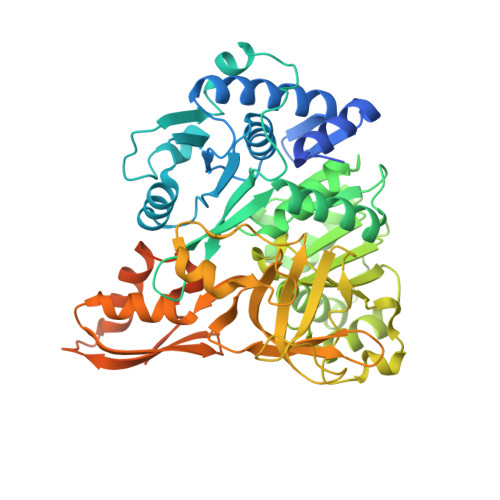Structural Elucidation of the Bispecificity of a Domains as a Basis for Activating Non-Natural Amino Acids.
Kaljunen, H., Schiefelbein, S.H.H., Stummer, D., Kozak, S., Meijers, R., Christiansen, G., Rentmeister, A.(2015) Angew Chem Int Ed Engl 54: 8833
- PubMed: 26096082
- DOI: https://doi.org/10.1002/anie.201503275
- Primary Citation of Related Structures:
4D4G, 4D4H, 4D4I, 4D56, 4D57 - PubMed Abstract:
Many biologically active peptide secondary metabolites of bacteria are produced by modular enzyme complexes, the non-ribosomal peptide synthetases. Substrate selection occurs through an adenylation (A) domain, which activates the cognate amino acid with high fidelity. The recently discovered A domain of an Anabaenopeptin synthetase from Planktothrix agardhii (ApnA A1) is capable of activating two chemically distinct amino acids (Arg and Tyr). Crystal structures of the A domain reveal how both substrates fit into to binding pocket of the enzyme. Analysis of the binding pocket led to the identification of three residues that are critical for substrate recognition. Systematic mutagenesis of these residues created A domains that were monospecific, or changed the substrate specificity to tryptophan. The non-natural amino acid 4-azidophenylalanine is also efficiently activated by a mutant A domain, thus enabling the production of diversified non-ribosomal peptides for bioorthogonal labeling.
Organizational Affiliation:
European Molecular Biology Laboratory Hamburg Outstation c/o DESY, Notkestrasse 85, 22603 Hamburg (Germany).

















